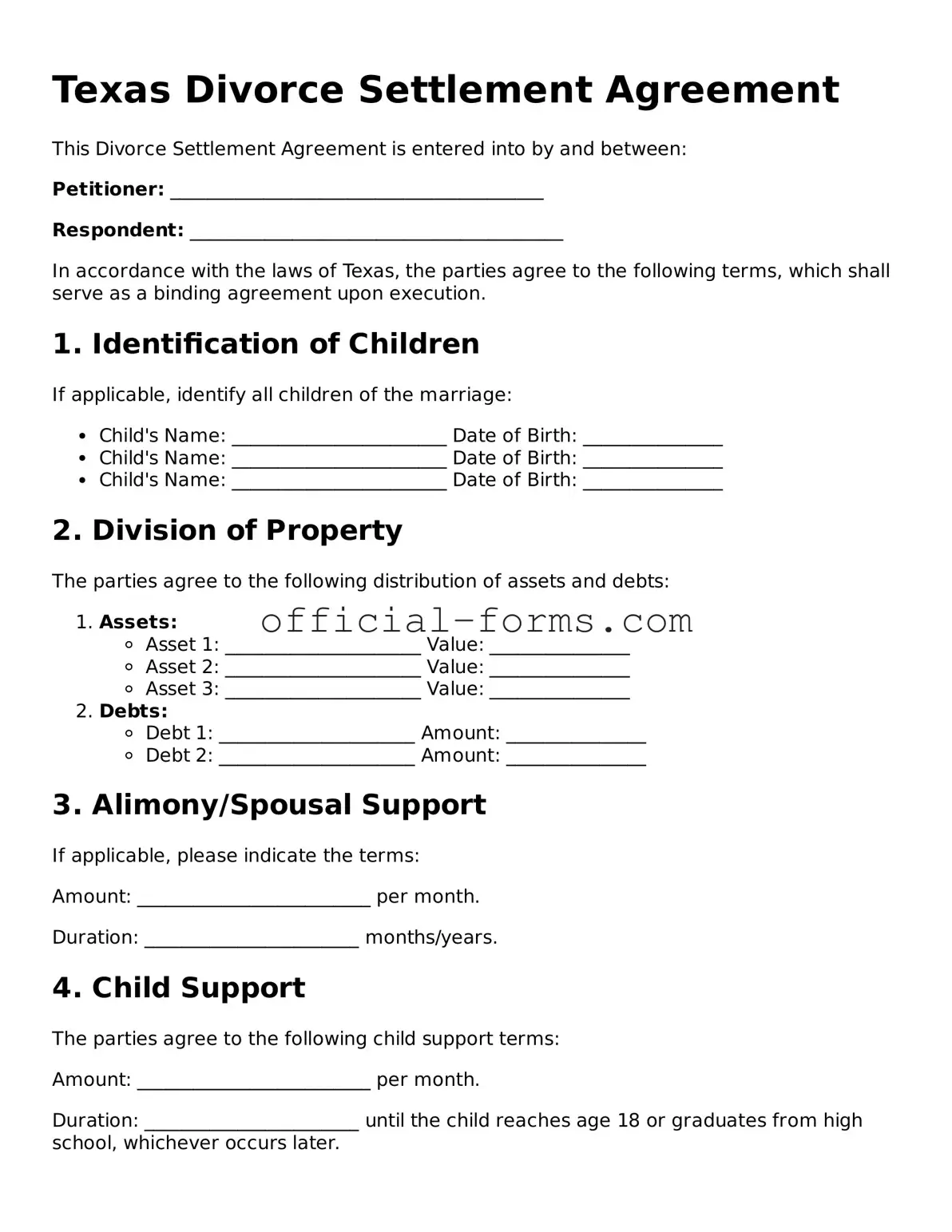Official Texas Divorce Settlement Agreement Document
The Texas Divorce Settlement Agreement form is a legal document that outlines the terms and conditions agreed upon by both parties during a divorce. This agreement typically addresses issues such as property division, child custody, and support obligations. Properly completing this form is essential for ensuring that both parties understand their rights and responsibilities following the dissolution of marriage.
Open My Divorce Settlement Agreement Now
